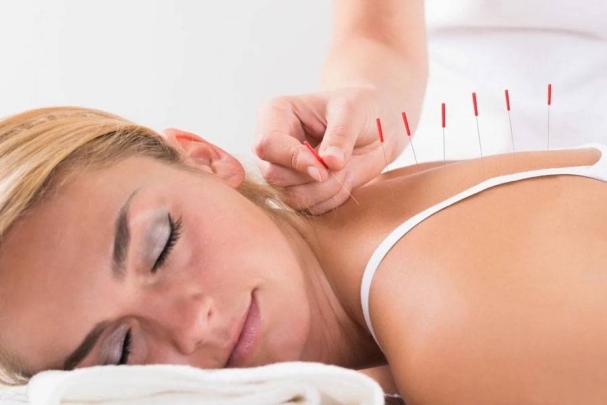
Athletes constantly push their bodies to the limit, leading to muscle pain, stiffness, and injury. Many athletes turn to dry needling to maintain peak performance and accelerate recovery. This technique is gaining popularity for its ability to relieve muscle tension and improve overall function. Let’s explore how dry needling can enhance athletic performance and speed up recovery.
What Is Dry Needling?
Dry needling is a technique trained professionals use to treat muscle pain and dysfunction. It involves inserting thin, sterile needles into specific points in the muscle, known as trigger points, to release tension and promote healing. Unlike acupuncture, which is based on traditional Chinese medicine, dry needling is rooted in Western medicine and focuses on the musculoskeletal system.
How Dry Needling Benefits Athletes
1. Relieves Muscle Tension
Athletes often experience muscle tension due to intense training, competition, and physical strain. Dry needling targets trigger points within the muscles, helping to release tight knots and reduce overall muscle tension. This can lead to improved flexibility and a greater range of motion, essential for optimal athletic performance.
2. Enhances Recovery
Recovery is a crucial part of any training regimen. Dry needling can accelerate recovery by increasing blood flow to the treated areas. The insertion of needles stimulates circulation, which helps deliver oxygen and nutrients to the muscles and removes waste products like lactic acid. This enhanced blood flow can reduce soreness and speed up the healing of muscle fibers after intense exercise.
3. Reduces Pain and Discomfort
Muscle pain and discomfort can hinder an athlete’s performance and training consistency. Dry needling alleviates pain by targeting the root cause—muscle trigger points. By reducing pain and discomfort, athletes can return to their training routines more quickly and perform at their best.
4. Improves Range of Motion
A limited range of motion can affect an athlete’s ability to execute movements effectively. Dry needling helps to improve flexibility and restore normal movement patterns by releasing tightness and addressing muscle imbalances. This increased range of motion can enhance an athlete’s technique and overall performance.
5. Prevents Injury
By addressing muscle imbalances and reducing tension, dry needling can help prevent injuries. Tight muscles and trigger points can contribute to poor biomechanics and increase the risk of injury. Regular dry needling sessions can help maintain muscle health and function, reducing the likelihood of injuries caused by overuse or strain.
What to Expect During a Dry Needling Session
For athletes considering dry needling, here’s what you can expect during a typical session:
1. Initial Assessment
Before the session, your practitioner will conduct an assessment to identify areas of muscle tension or pain. They will discuss your training regimen, any injuries or discomfort you’re experiencing, and your overall goals for the treatment. Athletes can benefit greatly from The Physio9 Clinic dry needling in Pune. This technique helps relieve muscle tightness, improve mobility, and support quicker recovery, allowing athletes to perform at their peak.
2. Needling Procedure
The practitioner will insert thin, sterile needles into the targeted muscle areas. You may feel a brief discomfort or a muscle cramp as the needle is inserted. This is a normal response indicating that the needle effectively stimulates the muscle.
3. Post-Treatment Sensations
After the session, you might experience some soreness or tenderness in the treated areas. This is usually mild and should resolve within a few days. Your practitioner may recommend stretching, hydration, and gentle exercises to support recovery and enhance the benefits of the treatment.
4. Follow-Up Sessions
The number of dry-needling sessions will vary based on your needs and goals. Your practitioner will work with you to develop a treatment plan and determine the appropriate frequency of sessions to achieve optimal results.
Integrating Dry Needling into Your Training Regimen
To get the most out of dry needling, consider integrating it into your overall training and recovery plan:
1. Combine with Other Therapies
Dry needling can be used with other therapies, such as physical therapy, massage, or stretching routines. Combining these approaches can provide comprehensive support for muscle health and recovery.
2. Regular Sessions
Regular dry needling sessions help maintain muscle function and prevent the buildup of trigger points. Based on your training intensity and individual needs, discuss with your practitioner how often you should schedule sessions.
3. Listen to Your Body
Pay attention to how your body responds to dry needling and adjust your treatment plan. Communicate openly with your practitioner about any changes in your symptoms or performance.
Addressing Common Concerns
Is Dry Needling Painful? Most athletes find the discomfort associated with dry needling minimal and manageable. The sensation of the needle insertion is usually brief, followed by a sense of muscle twitching or soreness.
How Quickly Will I See Results? Results can vary from person to person. Some athletes experience immediate relief; others may need a few sessions to notice significant improvements. The response depends on factors such as the severity of muscle tension and overall health.
Are There Any Risks? Dry needling is generally safe when performed by a trained professional. Mild side effects, such as soreness or bruising, may occur but are usually temporary. If you have specific health concerns, discuss them with your practitioner before starting treatment.
Conclusion
Dry needling offers valuable benefits for athletes looking to enhance their performance and accelerate recovery. Dry needling can help improve flexibility, reduce pain, and prevent injuries by targeting muscle tension and promoting healing. If you’re an athlete considering dry needling, consult a trained professional to develop a treatment plan that aligns with your training goals and supports your overall well-being. With the right approach, dry needling can be a powerful tool in your athletic toolkit, helping you stay at the top of your game.







